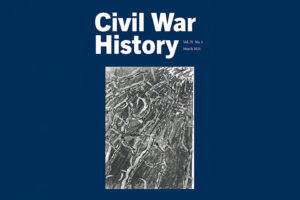
The views expressed are those of the author and do not represent the views of the SNF Agora Institute or Johns Hopkins University.
Author: Martha S. Jones
There is something remarkably fresh about Eric Foner’s 1974 essay, “The Causes of the American Civil War: Recent Interpretations and New Directions.” At the crossroads of the new political history, social and labor history, modernization theory, and recent studies (including his own) of the ideologies of proslavery and antislavery thought, Foner synthesized disparate threads of 1970s scholarship into a coherent set of questions that remain relevant today. Foner was particularly interested in competing visions of modernization, as an ideological project as much as an economic one. After several years of productive scholarship over the Civil War’s causes, the debate has unfortunately re-ossified into the old set of distinctions between the “fundamentalists” and “revisionists,” with the former emphasizing deep structural differences between antebellum Northern and Southern society that led “inevitably” toward secession and civil war and the latter highlighting the contingencies of post–second party system 1850s politics. Moreover, as Frank Towers observed in 2011, the “collapse” of the modernization theory of the Civil War’s causes has led to several new directions that have yet to cohere into a new interpretive framework.1
Historians of nineteenth-century politics have posed a variety of ways through the morass. Perhaps most productive are those that have expanded notions of the “political” to incorporate the actions of those denied access to [End Page 60] the ballot in 1860, including women, African Americans (free and enslaved), recent immigrants, Indigenous peoples and those otherwise excluded from the voting process (such as young people). What emerges from these newer studies of late antebellum politics is a more robust understanding of social tensions preceding the Civil War and, more importantly, the manifestation of them as struggles over power.
But there remains a question that has long animated more traditional political historians and that still requires attention by historians of the Civil War’s causes: how did ordinary Americans define the limits of legitimate political action? After all, the Civil War most immediately followed the refusal of several states to accept the legitimacy of a national presidential election. In a post-2020 election age where election denial has emerged as a recurring crisis, historians need to explore the question of legitimacy at the point where American mass democracy produced a civil war. Indeed, just as with contemporary attempts to delegitimize the votes of more marginalized elements of twenty-first-century America, the prospect of previously excluded people influencing the political course of the Union in the 1850s fueled a great deal of cultural panic, especially but not exclusively in the South. It mattered then (and now) who participated in politics and, just as importantly, how such political action altered Americans’ understanding of the Union.
I would propose a different framework to assess late antebellum political tensions and the coming of the Civil War through the lens of constitutional democracy and its inherent contradictions. By constitutional, I mean more than the 1787 Federal Constitution or even the various state constitutions. I mean the broader set of structures, habits, laws, and procedures that constitute the basic workings of American democratic politics. In other words, how did Americans constitute a democratic polity—not only who was “allowed” to participate in democratic political action, but how were those boundaries shaped, enforced, and, at key moments, rejected? Consider, for example, the ethno-racial identities of, say, Cincinnati’s recently arriving German immigrant artisans who shifted partisan allegiances in a world where debates over slavery in the West superseded earlier questions of immigration, temperance, labor or railroad development. Or think of enslaved women in Tennessee who circulated news and rumors in the wake of the Harpers Ferry raid and fueled wider fears of insurrectionary networks stretching from the Upper to Lower South. Both groups operated on or outside the limits of the legitimate formal democratic polity. They, like so many others, understood the political meaning of their actions, including how they disrupted existing political relationships [End Page 61] in the Union. But in doing so, they raised deeper questions of how the American political system could process deep sectional disputes and how the democratic impulse fueled the drive for civil war. By unpacking the contradictions of late antebellum constitutional democracy, historians may gain better insight into how and why the simmering conflict over slavery transformed into a full secession crisis and civil war.






